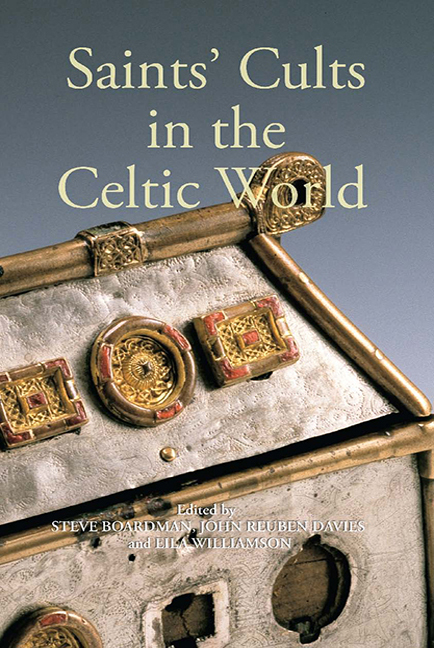Book contents
- Frontmatter
- Contents
- List of Illustrations
- List of Contributors
- Abbreviations
- Editors’ Preface
- 1 Rochester, Hexham and Cennrígmonaid: the movements of St Andrew in Britain, 604–747
- 2 The cults of Saints Patrick and Palladius in early medieval Scotland
- 3 Personal names and the cult of Patrick in eleventh-century Strathclyde and Northumbria
- 4 Bishop Kentigern among the Britons
- 5 Adjacent saints’ dedications and early Celtic History
- 6 Cuthbert the cross-border saint in the twelfth century
- 7 David of Scotland: ‘Vir tam necessarius mundo’
- 8 The cult of Saint George in Scotland
- 9 The cult of the Three Kings of Cologne in Scotland
- 10 The medieval and early modern cult of St Brendan
- General Index
- Miscellaneous Endmatter
Editors’ Preface
Published online by Cambridge University Press: 11 May 2017
- Frontmatter
- Contents
- List of Illustrations
- List of Contributors
- Abbreviations
- Editors’ Preface
- 1 Rochester, Hexham and Cennrígmonaid: the movements of St Andrew in Britain, 604–747
- 2 The cults of Saints Patrick and Palladius in early medieval Scotland
- 3 Personal names and the cult of Patrick in eleventh-century Strathclyde and Northumbria
- 4 Bishop Kentigern among the Britons
- 5 Adjacent saints’ dedications and early Celtic History
- 6 Cuthbert the cross-border saint in the twelfth century
- 7 David of Scotland: ‘Vir tam necessarius mundo’
- 8 The cult of Saint George in Scotland
- 9 The cult of the Three Kings of Cologne in Scotland
- 10 The medieval and early modern cult of St Brendan
- General Index
- Miscellaneous Endmatter
Summary
The origins of this volume lie in a series of papers delivered during two sessions of the Leeds International Medieval Congress in July 2006, supplemented by further invited contributions. The two sessions were organised under the auspices of the Survey of Dedications to Saints in Medieval Scotland, a project funded by a Major Research Grant from the Arts and Humanities Research Council. The project is designed to record and collate acts of dedication to saints (loosely defined to include all forms of commemoration and veneration) within the boundaries of the Scottish realm from the early medieval period to 1560.
The aim of the Leeds papers was collectively to address the way in which devotion to particular saints might transcend or cross linguistic, cultural and political boundaries. The emphasis of the papers collected here is therefore on the issue of transmission, that is, why certain saints’ cults spread beyond their original points or communities of origin to achieve a wider and more diverse following and the mechanisms by which this occurred. Many of the chapters have an Insular, and particularly north-British, focus. For this reason the volume was originally to have been entitled Saints’ Cults in the Insular World, but the wider scope of some of the essays, particularly the inclusion of material on Brittany and Breton cults, persuaded the publishers and editors to opt for the current title. The editors acknowledge that the implication that the cults examined in the volume grew and developed in a cultural, linguistic, devotional or political environment that could be described as distinctively or significantly ‘Celtic’ is potentially unhelpful.Most obviously, a number of contributions deal with societies, such as late medieval lowland Scotland and northern England, which were most assuredly not part of any wider ‘Celtic World’, if such could be said to have existed. Here, then, ‘Celtic’ is being used solely as a geographical shorthand to indicate that the studies that make up the volume concentrate on saints’ cults in a northern British context where interaction between Irish, Welsh and Scottish devotional traditions was extensive (particularly in the early medieval period).
Aside from the principal concern with tracing and explaining the spread of cults into new areas or social contexts, the collected essays have thrown up a variety of interesting sub themes.
- Type
- Chapter
- Information
- Saints' Cults in the Celtic World , pp. xi - xivPublisher: Boydell & BrewerPrint publication year: 2009

